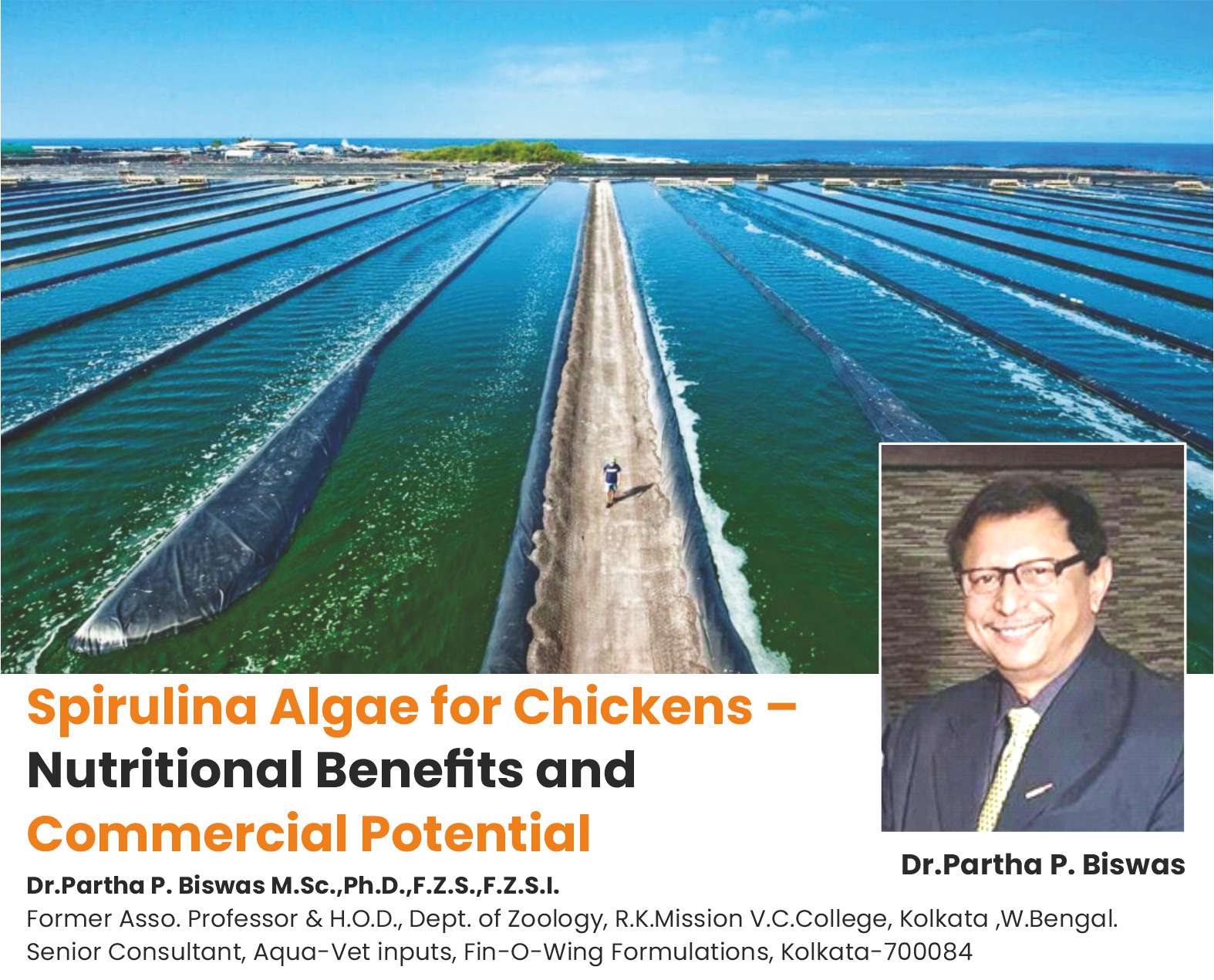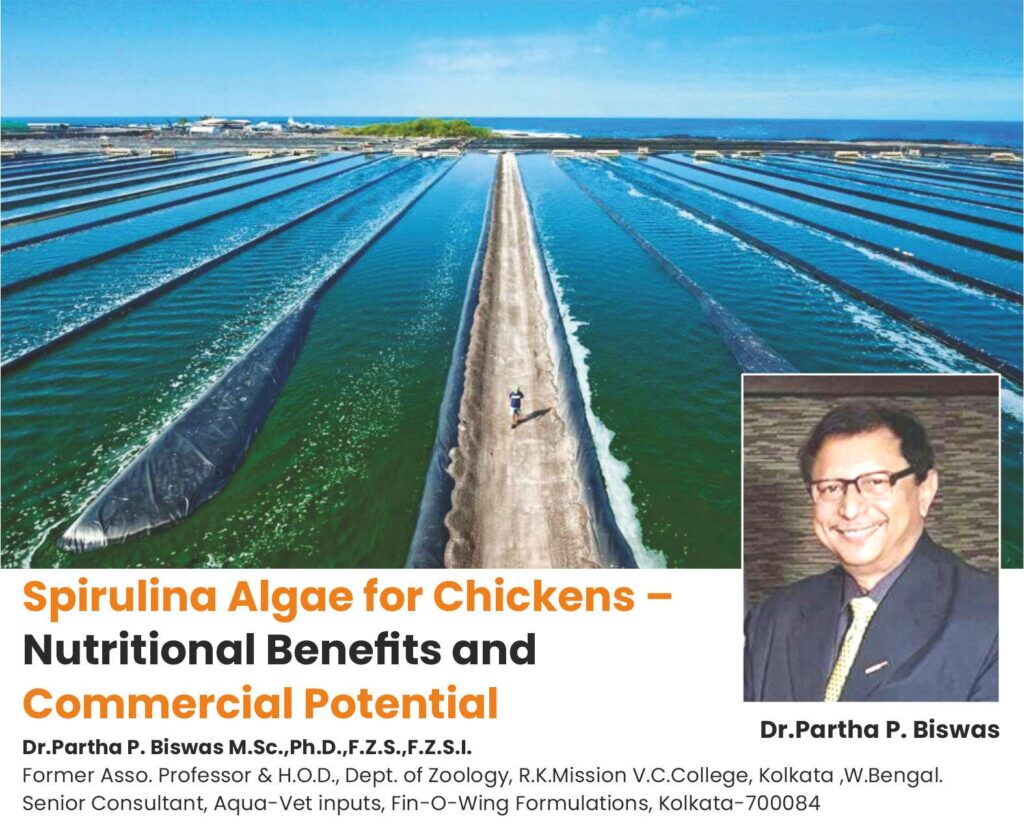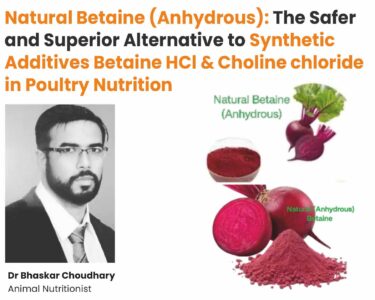Spirulina Algae for Chickens – Nutritional Benefits and Commercial Potential
Dr.Partha P. Biswas M.Sc.,Ph.D.,F.Z.S.,F.Z.S.I.
Former Asso. Professor & H.O.D., Dept. of Zoology, R.K.Mission V.C.College, Kolkata ,W.Bengal.
Senior Consultant, Aqua-Vet inputs, Fin-O-Wing Formulations, Kolkata-700084
Natural ingredients are becoming more popular in chicken feed as a substitute for artificial colouring, antibiotics, and other chemicals that compromise human health and safety. One of the best natural feed additions for animals and poultry feed that improves nutritional content is spirulina, a microscopic alga. All of the necessary vitamins, minerals, and amino acids are present in spirulina. Moreover, it contains a wealth of fatty acids and carotenoids, particularly γ-Linolenic acid (GLA), which has been linked to positive health effects. But what sets spirulina apart as a novel animal feed is its high protein concentration (55 to 65%). For improved growth and decreased mortality, animal meals are supplemented with spirulina powder. Furthermore, these microalgae have been observed to have a high nutrient digestibility and an amino acid pattern that may be on par with or better than that of other vegetable diets and feeds. Aside from these, spirulina also includes colours (including β-carotene and zeaxanthin), phycobilin proteins (such phycocyanin, which is exclusive to cyanobacteria), vitamins, and macro and micro mineral components. These substances function as immunity boosters and colourants or disclose possible biological qualities as antibacterial, antioxidant, anti-cancer, and anti-inflammatory effects.
Spirulina is a type of blue green algae
These days, taxonomists, at least, agree that all Spirulina grown for commercial purposes belongs in the genus Arthrospira. Since this material is currently so well-known by this name, it appears inevitable that it will continue to be used; however, it should be written as Spirulina or spirulina, without the italics.
Spirulina is a microscopic algae, also known as blue-green algae. It belongs to the Cyanophyceae family. They feed themselves through photosynthesis like plants, but their cells do not have a cellulose membrane like bacteria (which explains their very high digestibility, about 83%). The two most commonly used species are Spirulina platensis and Spirulina maxima. In India, Spirulina fusiformis is also considered a parent plant.
The name spirulina is derived from the Latin word meaning spiral or spiral. It is most often found in sea and brackish water. The blue- green color of the organism is due to the presence of several photosynthetic pigments such as chlorophyll, carotenoids, phycocyanin and phycoerythrin. Phycocyanin is responsible for the blue color of the body. According to the World Health Organization (WHO), spirulina is an interesting food rich in iron and protein and declared it as the best food of the future.
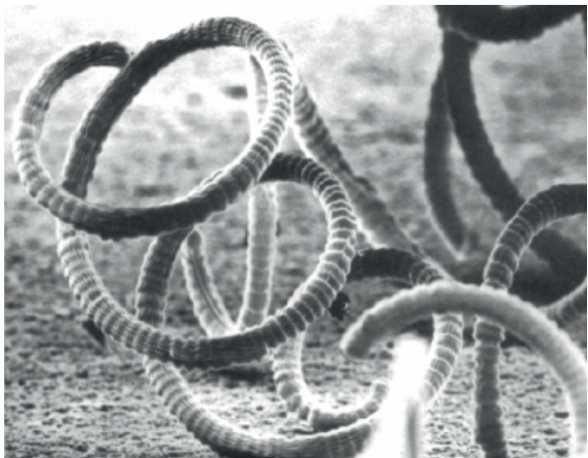
Fig.1 Scanning electron micrograph of morphology of Spirulina (Arthrospira)
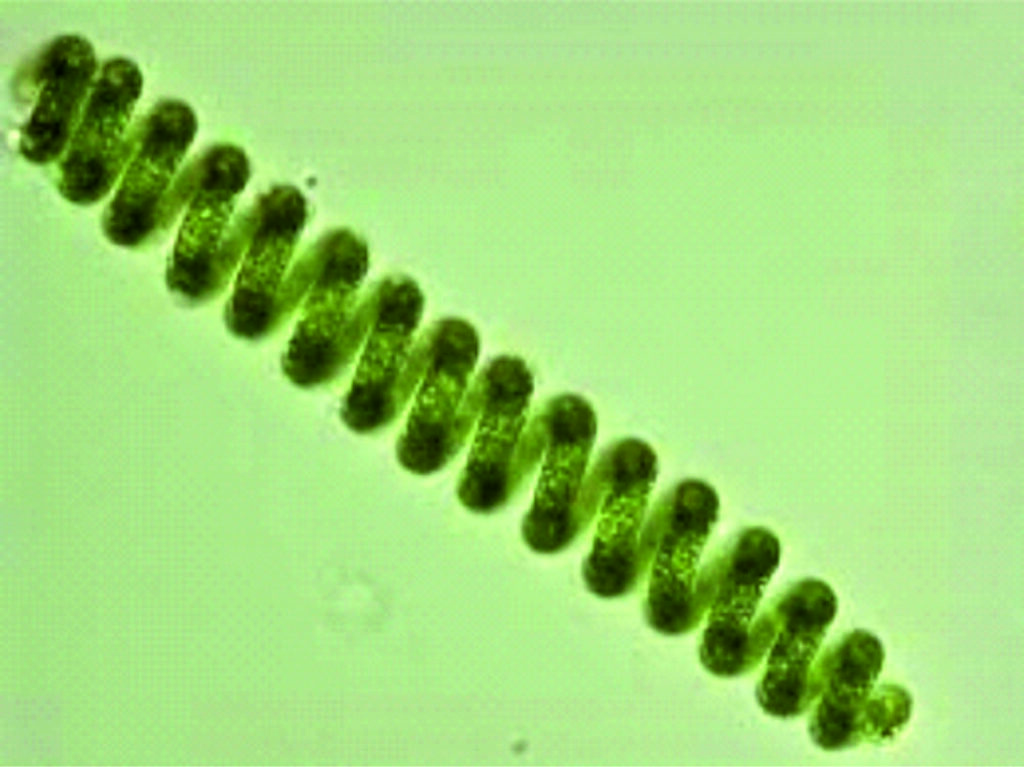
Fig.2 Arthrospira platensis
Health benefits of Spirulina
1. Dietary supplementation of Spirulina can beneficially affect gut microbial population.
2. It affects serum biochemical parameters, and growth performance of chicken.
3.It contains polyphenolic contents having antibacterial effects.
4.It also has considerable quantities of unique natural antioxidants including polyphenols, carotenoids, and phycocyanin.
5. In addition to acting directly on the bacteria by weakening and increasing the permeability of the bacterial cell walls, which ultimately causes cytoplasmic content leakage. Spirulina extracts also inhibit bacterial motility, invasion, biofilm formation, and quorum sensing.
6. Spirulina has demonstrated antiviral properties against a number of common animal viruses, and it is possible that these properties could also be beneficial against viruses that infect birds. Spirulan, an internal polysaccharide of spirulina that is rich in calcium, may have an antiviral effect by preventing the entry of various viruses into host cells, increasing nitric oxide production in macrophages, and inducing the release of cytokines.
7. When added to chicken feed, it has immune modulatory effects that may increase resistance to disease and enhance survival and growth rates, especially in stressful situations.
8. The high nutrient digestibility of these microalgae is superior to or comparable with that of other vegetable diets and feeds.
9. Soybean meal in particular can be partially replaced by spirulina in place of more conventional protein sources.
10. In addition to the numerous Omega-3 and -6 polyunsaturated fatty acids that make up 25% and 60% of the total fatty acids in spirulina, other polyunsaturated fatty acids that are present in spirulina include oleic acid, linoleic acid, gamma-linolenic acid, docosahexaenoic acid (DHA), sulfolipids, and glycolipids.
11. Carotenoids, or pigments containing chlorophyll and β-carotene, are also present in spirulina (4000 mg/kg).
12. Spirulina also contains phytobiliproteins, vitamins, and macro- and micromineral elements such as calcium, iron, magnesium, manganese, potassium, zinc, and selenium. 13.In addition, pro-vitamin A, vitamin E, vitamin K, various B vitamins, polysaccharides, and antioxidants are all significant components of spirulina.
14.Hens and cocks showed significantly improved FCR when fed the basic diet supplemented with 2 or 3 g spirulina/kg diet during the laying period from 29 to 40 weeks of age.
15. A higher zinc content in spirulina such as this could be the cause of the improvement in cellular immunity seen in response to dietary supplementation of spirulina.
Tropical Climate in Tamil Nadu, South India, is perfect for Spirulina Cultivation
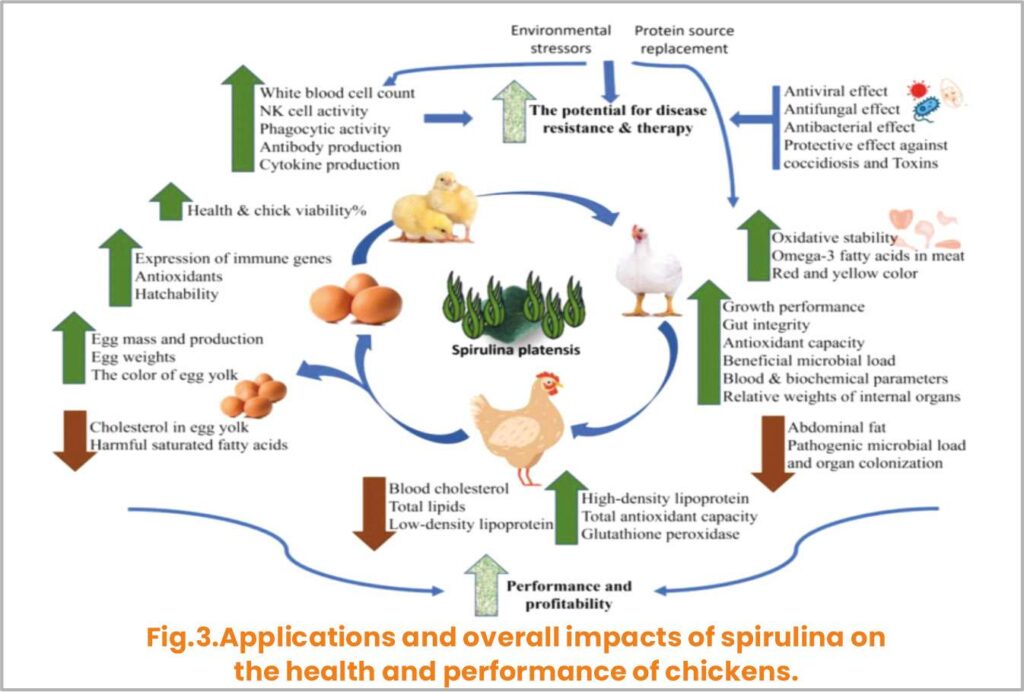
The warm tropical climate of Tamil Nadu is perfect for spirulina cultivation. In fact, certain varieties of spirulina grow naturally there. The ideal temperature range for growing spirulina in Tamil Nadu is between 25°C and 35°C. The best places to grow spirulina are also the ones that receive the most sunlight in the growing season. Spirulina is cultivated in large plastic or cement water tanks. The standard container size for spirulina is 10 x 5 x 1.5 feet, but containers can be of any size. It should be able to effectively pump 1000 liters of water, because this is the amount needed to fill to a height of 2-3 meters. After 3–4 weeks, or when the crop has reached a sufficient density, the crop can be harvested. When the spirulina is mature, it is pumped out of the pond to a collection point where the algae are filtered through stainless steel screens. The strained spirulina algae paste is then applied and washed three times with drinking water before it goes into a drying vessel, which turns it into a powder.Spirulina Hub, a Hyderabad-based enterprise, produces flakes, capsules, tablets, and powder for use in a range of dietary supplements.
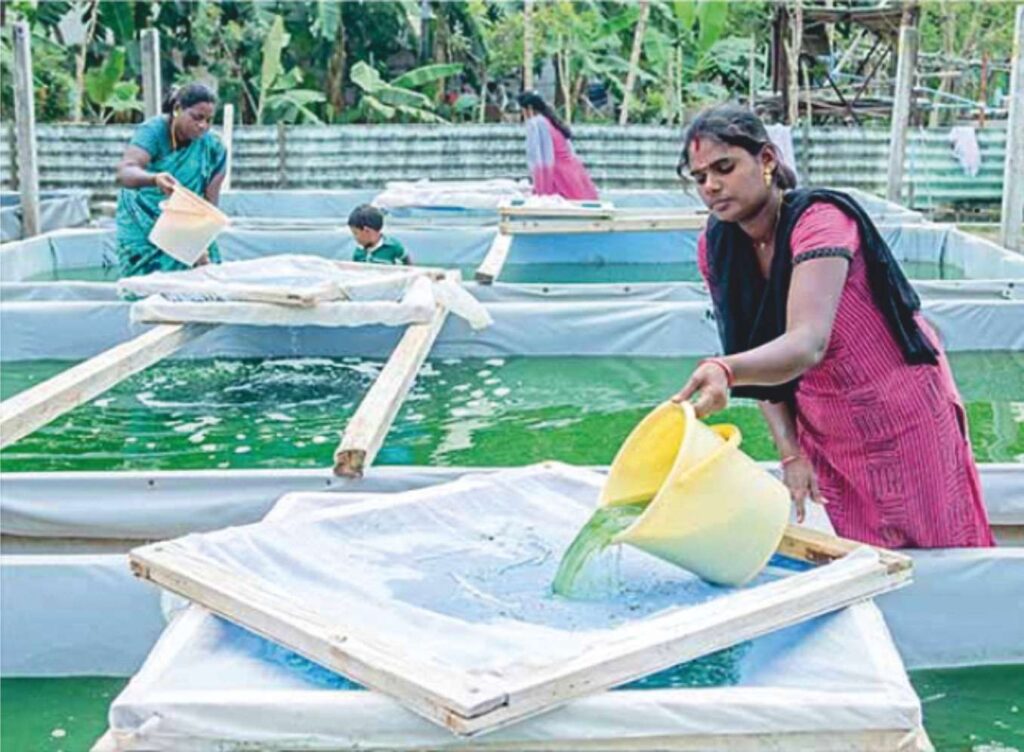
Fig.4.Ladies involved in the spirulina industry
Morphology of Spirulina
Spirulina consisted of multicellular, filamentous, unbranched trichomes. The filaments were referred to as ‘trichomes’. The trichomes have a length of 50–500 μm and a width of 3–4 μm.The cells were cylindrical and the spiral was loose. There were gas filled vacuoles within the cells and the filaments had a helical shape. Multiplication occurs only by fragmentation of a trichome.
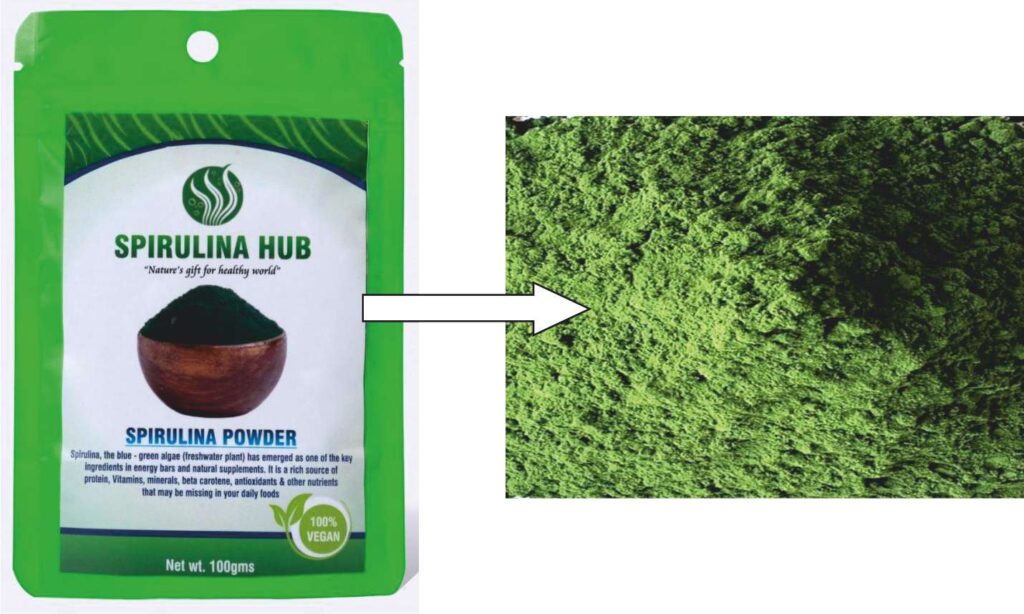
Fig.5. A Hyderabad based company is providing organic Spirulina powder in four different forms (powder, liquid, tablet & capsules, and flakes forms) to meet the needs of consumers for immediate use. (Permission taken for using this image for illustration purposes.)
Increases Immunological Functions in Chickens
In poultry, some recent studies have shown that feeding SP is responsible for improvement of immune functions, subsequently increased disease resistance, improved survival and growth rates Spirulina supplementation at 10,000 ppm ( = 1% ) level increased candidate NK-cell activity by two-fold over the controls. This may enhance disease resistance potential in chickens. Research conducted supplementation of the heat-exposed broilers diet with Spirulina and found enhanced humoral immunity response. Improvement in cellular immunity observed in response to dietary supplementation of Sprirulina might be attributed to higher Zn concentration in spirulina.
Better Serum Biochemistry by Spirulina Supplementation
Addition of up to 6 g/kg spirulina to the normal diet of broilers can improve the hematological and serum biochemistry of broiler chickens. Spirulina supplementation reduced serum urea and creatinine levels, suggesting that only microalgae promote more efficient nitrogen utilization. , which promotes a better balance between the body’s protein synthesis and the body’s protein breakdown.
Powerful Antioxidant Activity in Spirulina
Antioxidants counteract free radicals, preventing cell damage. ROS (reactive oxygen species), especially H2O2, disrupt the physiological equilibrium in tissues by breaking down biological components such proteins, lipids, and nucleic acids. SOD (superoxide dismutases) catalyses the dismutation(a type of redox process involving simultaneous reduction and oxidation) of hydrogen peroxide and molecular oxygen. SODs are the first line of defence against damage caused by reactive oxygen species (ROS).
These protect tissues from oxidative damage by converting superoxide radicals (O2-) into molecular O2 and H2O2.The primary enzyme in cells that scavenges hydrogen peroxidase and transforms it into water is glutathione peroxidase (GPx). SOD and GPx have the ability to directly offset oxidative stress and shield cells from DNA damage. Heat stress causes lipid peroxidation in cell membranes and increases corticosterone release, both of which promote oxidative tissue damage.Increased levels of MDA (mitochondrial malondialdehyde) and decreased activities of serum SOD and GPx in broilers exposed to high temperatures result in an imbalance in the oxidants/ antioxidants system and oxidative stress. Therefore, organic substances that counteract free radicals may help to rebalance the ratio of antioxidants to oxidants, promoting growth and better health. C-phycocyanin, a strong antioxidant, is one of the main components of Spirulina platensis. As a result, when compared to other heat-exposed birds in the current study, broiler chickens exposed to heat and fed 2% spirulina in their diet showed significantly lower MDA levels and higher SOD and GPx activities.
Feeding Spirulina & Chicken Meat Colour
One of the most crucial aspects that consumers consider when assessing fresh meat products is the color of the meat. Customers’ decisions about meat are largely influenced by the color and flavor of the meat. The color of chicken meat can be controlled with dietary spirulina, particularly in the range where the fillets made from feeding spirulina do not fall entirely into the dark or light meat categories. The high levels of carotenoids in the microalgae are probably what caused the darker, redder, and more yellow coloration of the breast filets fed on spirulina. According to some research findings, the common yellow pigment associated with the buildup of zeaxanthin in meat may correspond with the increase in yellowness associated with dietary spirulina content. Therefore, dietary spirulina is a powerful tool for adjusting the color of chicken meat. The addition of dietary spirulina at 1% of the total ration one week prior to slaughter has been found to produce the most consumer-preferred levels of muscle tissue pigmentation in broiler meat.
Spirulina Improves Chicken Meat Quality
The taste of the samples fed on spirulina was less metallic, and compared to the control group, the samples from the two alternate feed groups were softer and more tender. According to one study, adding S. platensis to broiler chicken diets can improve performance metrics, fatty and amino acid profiles, antioxidant status, and meat quality. In a similar vein, other researchers found that adding 15% of spirulina to broiler diets produced good-quality breast and thigh meat from chickens with higher levels of saturated fat, total carotenoids, and yellowness. As previously mentioned, feeding broilers spirulina, particularly at 1% and 2%, dramatically decreased the serum levels of total lipid, triglycerides, and cholesterol when compared to the control group.
Following spirulina supplementation, the fatty acid profile of the thigh meat of broiler chickens has been improved, particularly for eicosapentaenoic and docosahexaenoic acids.
Spirulina & Superior Egg Quality
In order to maximize egg production and maintaining flock health, feeding practices for laying hens are crucial. Particular focus is placed on the type, quantity, and caliber of protein provided in feeds. Egg quality is improved when spirulina is fed to the hens. The profitability of chicken production and consumer satisfaction are both impacted by the quality of the eggs produced. Egg weight, egg mass, and laying rate are all increased when 0.1%, 0.15%, and 0.2% spirulina is added to the diet, according to research. A useful natural feed supplement, spirulina at a concentration of 0.3% enhances the laying ability, egg quality, and hepatoprotective activity of hens. Feeding with spirulina considerably raises the average weight, color, and strength of the eggshell. A diet containing 2.0%-2.5% of spirulina significantly increases the egg yolk colour.
Conclusion
Animal nutritionists are paying close attention to alternative protein sources such as algae meals in order to substitute soybean meal (SBM). Spirulina microalgae meal appears to be a very viable option for SBM in broiler diets, at least in part. Spirulina has already been studied in relation to feeding additives for many of the most commonly farmed animal species. These trials’ outcomes have demonstrated increased output, better health, and higher-quality products. Many of the findings, nevertheless, run counter to one another. As a result, more spirulina research is required. In the near future, research on spirulina’s active components and associated biological pathways will contribute to our understanding of the plant’s potential, application, and implications for sustainable animal production.


